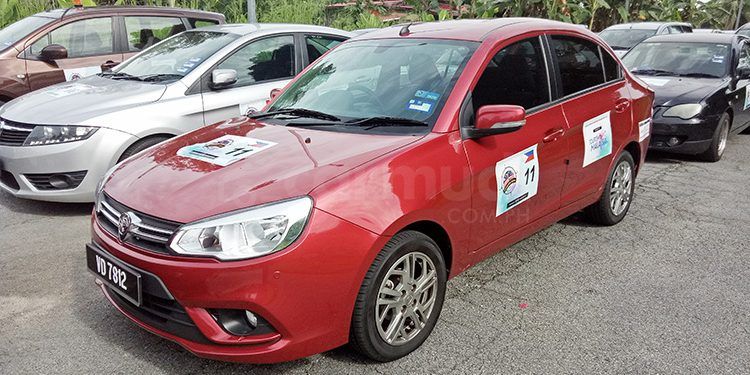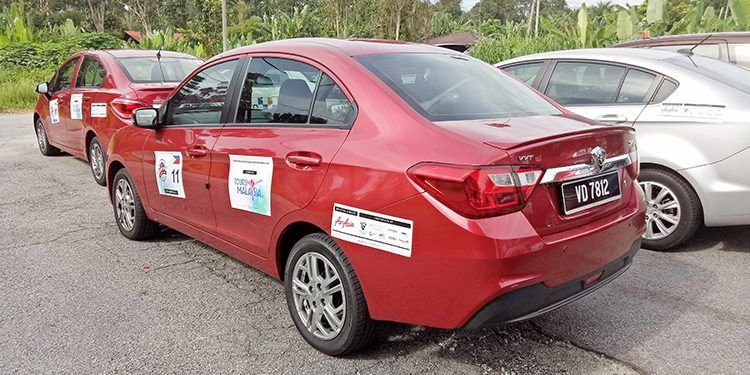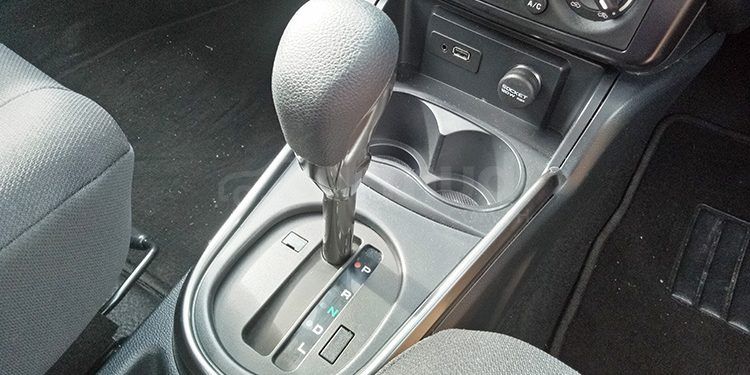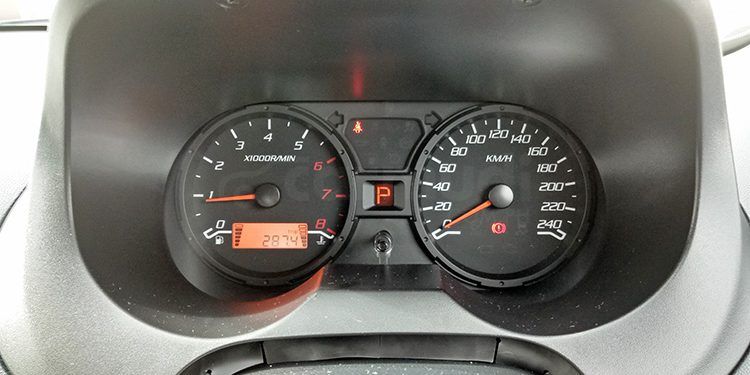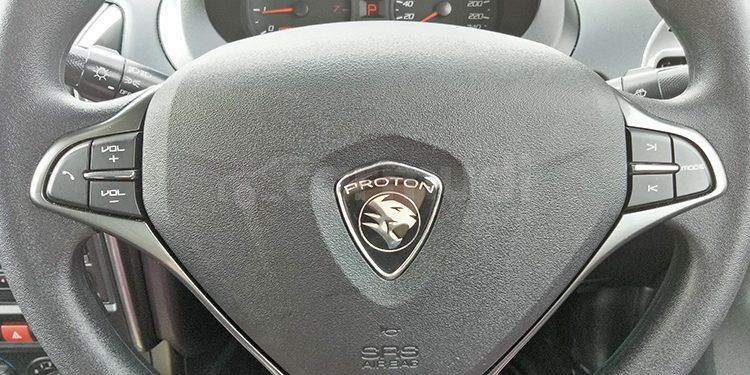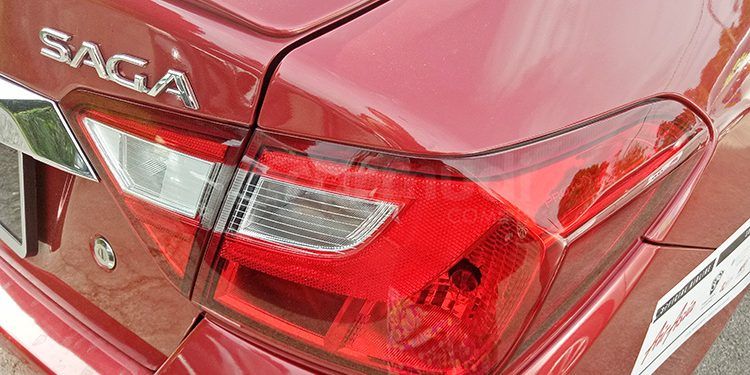TEST DRIVE: 2017 Proton Saga Premium CVT - Small Wonder

For a few years during the 1990s, the Malaysian car brand Proton was sold locally with the Proton Wira, a compact sedan based on the fourth-generation Mitsubishi Lancer, as its flag bearer. Distributed by Auto Prominence, the distributorship went belly up after only a few years due to poor sales, not to mention the financial crisis that struck the Asian region in 1997.
Carmudi.com.ph was recently invited by Tourism Malaysia--who flew us to and from Malaysia via Air Asia--to be a media representative in the 2017 ASEAN Media Bloggers Tourism Hunt. An annual event, last year's staging saw the participants being transported around Malaysia in a bus. This time around though, we drove to our destinations in a Proton Saga, one of 31 various Proton vehicles allotted for the four-day event by Proton Holdings.
The third-generation Proton Saga is the newest model in the Malaysian carmaker's lineup, having been launched in September 2016. As Proton's entry-level model, it has a lot to live up to as the first-gen Saga was produced for over 20 years and supposedly sold more than 1.2 million units.
Styling – 6/10
The Saga looks homely and won't win any industrial design contest. Then again, it doesn’t have to because its main selling point in the Malaysian market is its affordability at just RM45,800 (around P540,000)--not bad at all considering this particular variant is very well-equipped.
Exterior
As a whole, the Saga has a squat profile and looks uninspiring and tepid. Take some of the exterior elements on their own though and the car surprisingly starts to look good.
From the side, the Saga has a streamlined silhouette that's bolstered by the ridges on the hood and roof. The character line that runs through the door handles give the car a touch of drama. The chrome slats on the grille are framed by crystal-clear headlights while fog lamps are found at the corners of the front bumper. Out back, the two-piece taillights are joined together by a chrome garnish while the rear fog lamp is located in the middle of the quasi-diffuser. On all four corners of the Saga are 15-inch alloy wheels which look just right for the car.
Oddly, while the rear sonar sensors are found near the middle of the bumper where they're supposed to be, the front ones are found at the corners, so while they're useful for navigating tight bends, they're practically useless when trying to park bumper-to-bumper, front-end first.
Interior
Save for the headliner, the Saga's cabin is predominantly black, with what Proton calls as 'Titanium Chrome' serving as accents on the steering wheel, air-condition vents, and center console.
Though this particular Saga goes by as the 'Premium' variant, you won't find leather seats as occupants sit on fabric-covered ones, which is strange considering the soft PVC dashboard has faux stitching on it.
A two-DIN stereo system with Bluetooth functionality, though strictly limited for making or receiving calls, resides high in the center console while underneath it are a plethora of buttons, including the on/off switches for the front and rear fog lights and the power door lock for all four doors. Also, the stereo can be controlled by the buttons on the left and right spokes of the three-spoke steering wheel.
The Saga has a number of cubbyholes, but only two cup holders intended solely for the front-seat occupants. Those in the rear would have to make do with the bottle holders in the door panels. The two USB chargers located at the back end of the center console should provide enough consolation for them though as they charge their devices.
Surprisingly, for a subcompact car of its size, the Saga's trunk space is generous at 420 liters, which can even be increased further by folding down the bench-type rear seat back to accommodate longer cargo. In our case, we managed to fit two full-size, hard-shell suitcases into the trunk easy.
Engine & Performance – 7/10
Underneath the Saga’s hood is a four-cylinder, 1.3-liter engine that puts out 94 hp and 120 Nm of torque through a continuously variable transmission. While its power seems adequate for a car of its size, there was some hesitation when it comes to pulling the car forward, specifically when exiting Malaysia's toll barriers and when it needs to pick up speed.
Still, despite the slower-than-usual power delivery, the car had no problem reaching the country's maximum speed limit of 110 kph--at times even reaching 140 kph with the prompting of our Kuala Kangsar police escorts.
Fuel Economy – 9/10
Sadly, fueling the Saga was under the control of the event organizers so we couldn't determine exactly how fuel efficient the car is. Proton claims though that this particular variant can do 5.6 liters for every 100 kilometers or 17.857 km/L "driving constantly at 90km/h with Eco Drive Assist mode under predetermined and controlled conditions" and we're inclined to believe it.
That’s because on the drive from Kuala Lumpur to a service station on the E1 Expressway on our way to Ipoh, after accomplishing numerous tasks all day to cover 189 km, we only consumed the equivalent of one bar out of the six indicated on the electronic fuel gauge--and we still had 83 kilometers to go on our first day of the trip.
Features – 9/10
For a car in its price range, the Proton Saga is surprisingly well-equipped, specifically the Premium variant that we had. Located in the center console are the switches for the Electronic Stability Control with Traction Control and the parking assist sensors.
Another feature in the Saga Premium that you won't find elsewhere in the vehicles in its class locally is its reverse camera with guidelines which plays the video in a built-in LCD screen in the rearview mirror--the latter being found in some vehicles that cost three or four times the vehicle's price.
Driving Impressions – 7/10
While Proton frequently likes to harp that some its cars are tuned by Lotus, which it previously owned, the Saga, sadly, wasn't one of them.
While the ride is generally good and stable with the MacPherson Strut with Stabilizer Bar front and Torsion Beam Axle rear suspensions, body roll is quite noticeable when taking a corner at speed. Steering is good though, with appropriate feedback given by the hydraulic rack and pinion power steering system.
The Saga's cabin is surprisingly quiet and the air-conditioning system requiring only the lowest setting on the blower though it's still no match for the midday Malaysian sunshine.
Worth noting too is that the turn signal stalk for the Saga is found on the left of the steering column and not on the right, which is the case for other right-hand drive cars like in Thailand.
Verdict – 8/10
The Proton Saga may not be much to look at but it’s well-equipped for a car in its class, with features that can’t be found in vehicles in its segment in the local market. It would have been a significant contender if it was sold locally, provided the market has abandoned its prejudice against car brands that aren’t of either Japanese, American, or European in origin.
Pros & Cons
Pros
- It’s well-equipped, features-wise, for a vehicle in its class.
- Cargo space is more than expected.
Cons
- Vastly underpowered, with some hesitation in power delivery.
- Doesn’t look appealing at first glance.
Breakdown
Styling – 6/10
Engine & Performance – 7/10
Fuel Economy – 9/10
Features – 9/10
Driving Impressions – 7/10
[gallery size="vw_two_third_thumbnail_no_crop" ids="19948,19949,19957,19958,19959,19950,19960,19955,19954,19953,19952,19956,19951">
Featured Articles
- Latest
- Popular
Recommended Articles For You
Featured Cars
- Latest
- Upcoming
- Popular
Car Articles From Zigwheels
- News
- Article Feature
- Advisory Stories
- Road Test
